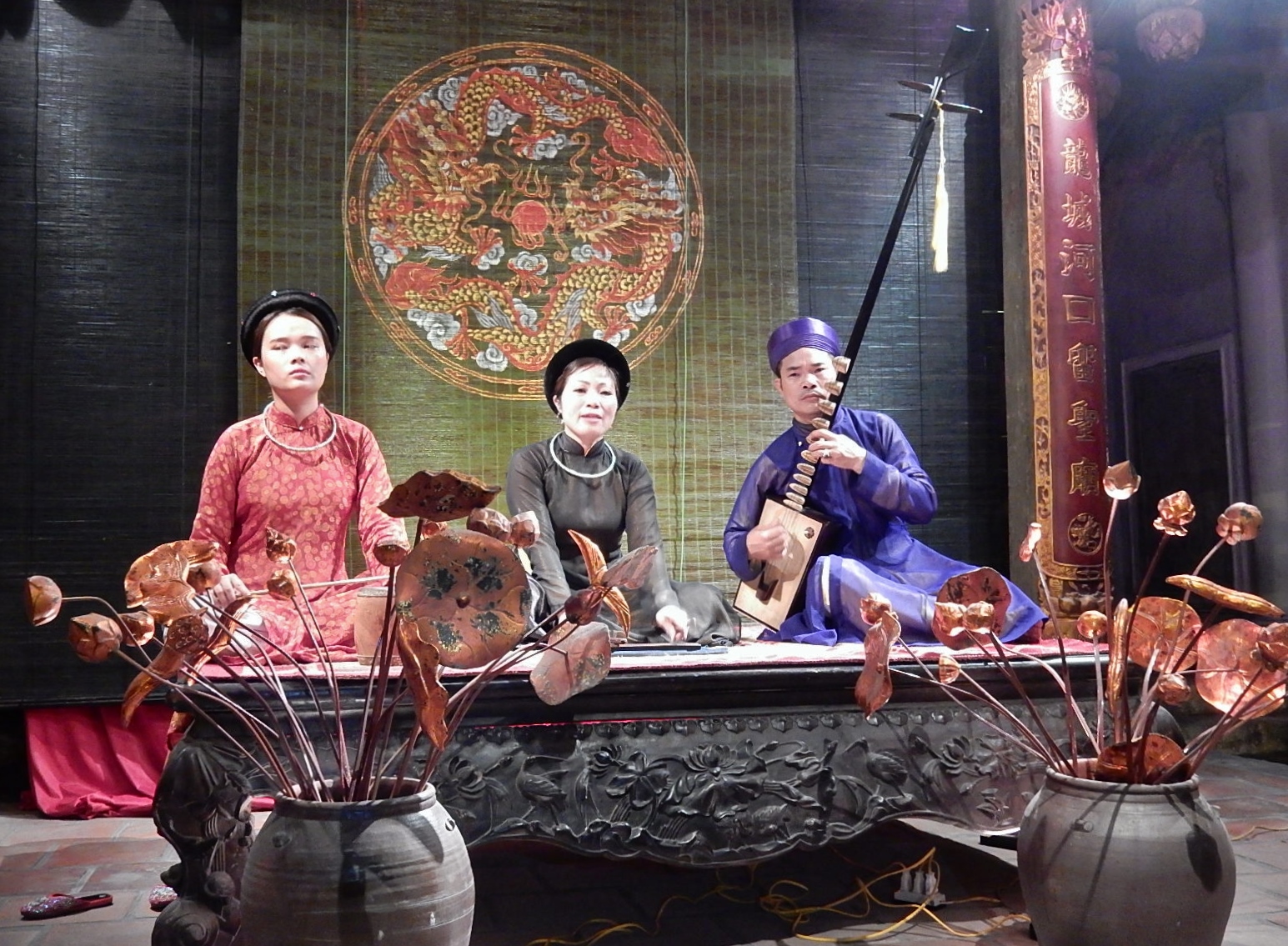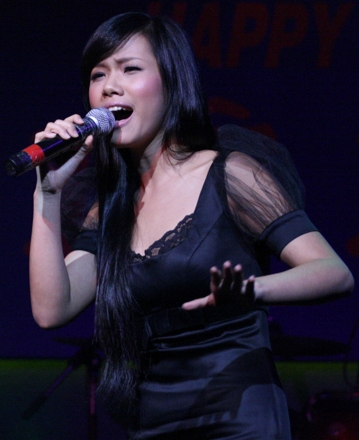|
Vietnamese Popular Music
The Western-influenced popular music of Vietnam (''Tân nhạc Việt Nam'', "New music of Vietnam") developed from the 1940s–1980s. Singers, songwriters and singer-songwriters The Vietnam War and the plight of Vietnamese refugees inspired a collection of musical pieces that have become "classical" anthems among Vietnamese people both in Vietnam and abroad. There are many notable songwriters including the nicknamed three 'fathers' of popular music. They are Lam Phương (b. 1937), who is best known for his love songs and ballads, traditional Cải lương, and Vietnamese patriotic music, Phạm Duy (b. 1921), and Trịnh Công Sơn (b. 1939), known as the "Bob Dylan of Vietnam" whose songs were sung by Khánh Ly.Olse Popular Music of Vietnam5 Sep 2010 – ''Popular Music of Vietnam: The Politics of Remembering, the Economics of Forgetting'' by Dale A.Olsen Routledge, New York, London, 2008 Other notable songwriters include Văn Cao (b. 1923), a Vietnamese composer whose works i ... [...More Info...] [...Related Items...] OR: [Wikipedia] [Google] [Baidu] |
Vietnam
Vietnam or Viet Nam ( vi, Việt Nam, ), officially the Socialist Republic of Vietnam,., group="n" is a country in Southeast Asia, at the eastern edge of mainland Southeast Asia, with an area of and population of 96 million, making it the world's sixteenth-most populous country. Vietnam borders China to the north, and Laos and Cambodia to the west. It shares maritime borders with Thailand through the Gulf of Thailand, and the Philippines, Indonesia, and Malaysia through the South China Sea. Its capital is Hanoi and its largest city is Ho Chi Minh City (commonly known as Saigon). Vietnam was inhabited by the Paleolithic age, with states established in the first millennium BC on the Red River Delta in modern-day northern Vietnam. The Han dynasty annexed Northern and Central Vietnam under Chinese rule from 111 BC, until the first dynasty emerged in 939. Successive monarchical dynasties absorbed Chinese influences through Confucianism and Buddhism, and expanded ... [...More Info...] [...Related Items...] OR: [Wikipedia] [Google] [Baidu] |
Vietnamese Culture
The culture of Vietnam (Vietnamese: Văn hoá Việt Nam) is highly multicultural. The early culture in Vietnam started with the Bronze Age Dong Son culture, Đông Sơn culture considered to be one of its most important progenitors for its Ancient history. Vietnamese culture was heavily influenced by Chinese culture due to the Vietnam under Chinese rule, 1000 years of Northern rule. In this period of time, Classical Chinese was used to write which was known as Literary Chinese in Vietnam, Hán văn. Vietnamese was written with chữ Hán, a Chinese characters, Chinese script, and a Vietnamese derived script (''chữ Nôm'') from Chinese characters, but which included invented characters to represent native Vietnamese words. These scripts were known collectively as chữ Hán Nôm. This large impact on Vietnamese culture means that Vietnam is often considered to be part of the Sinosphere (with China, South Korea, North Korea, and Japan). Following independence from China in the ... [...More Info...] [...Related Items...] OR: [Wikipedia] [Google] [Baidu] |
Vietnamese Music
Traditional Vietnamese music encompasses a large umbrella of Vietnamese music from antiquity to present times, and can also encompass multiple groups, such as those from Vietnam's ethnic minority tribes. History Traditional Vietnamese music has been mainly used for religious activities, in daily life, and in traditional festivals. Vietnam's ethnic diversity has also made its music scene diverse. Each of Vietnam's ethnic group owns many unique types of musical instruments. The influence of Chinese culture on Vietnamese music is also quite prevalent, such as maids, harps and erhu. However, traditional Vietnamese music, whilst often compared to traditional Chinese music, is not exactly the same. Royal court music Royal Vietnamese court music first appeared in the 1040s after a successful seaborne raid against Champa led by king Lý Thái Tông in 1044. Cham women were taken as singers, dancers and entertainers for the court. The chronicles recorded that a special palace for Cham wo ... [...More Info...] [...Related Items...] OR: [Wikipedia] [Google] [Baidu] |
Vietnamese Songwriters
Vietnamese may refer to: * Something of, from, or related to Vietnam, a country in Southeast Asia ** A citizen of Vietnam. See Demographics of Vietnam. * Vietnamese people, or Kinh people, a Southeast Asian ethnic group native to Vietnam ** Overseas Vietnamese, Vietnamese people living outside Vietnam within a diaspora * Vietnamese language * Vietnamese alphabet * Vietnamese cuisine * Vietnamese culture The culture of Vietnam (Vietnamese: Văn hoá Việt Nam) is highly multicultural. The early culture in Vietnam started with the Bronze Age Đông Sơn culture considered to be one of its most important progenitors for its Ancient history. Vie ... See also * List of Vietnamese people * {{disambiguation Language and nationality disambiguation pages ... [...More Info...] [...Related Items...] OR: [Wikipedia] [Google] [Baidu] |
Vietnam Idol
''Vietnam Idol'' ( or from season 5) is a Vietnamese reality television competition to find new solo singing talents. It is part of the ''Idol'' franchise; it originated from the reality program ''Pop Idol'' created by British entertainment executive Simon Fuller. Starting from season 3, the show was produced by Vietnam Television and the BHD Pictures, replacing the joint-venture between Ho Chi Minh City Television and Dong Tay Promotion from the previous two seasons. History ''Vietnam Idol'' was created based on the British show ''Pop Idol'' and U.S. show ''American Idol''. Đông Tây Promotion and its sponsor partner Unilever secured the format license for US$2 million, which was the highest licensing fee paid for a reality TV show in Vietnam at the time. The show debuted in 2007 in Vietnam under the name ''Thần tượng âm nhạc: Vietnam Idol'' ("music idol: Vietnam idol"), broadcast by Ho Chi Minh City Television under the production of Đông Tây Promotion. Due to dec ... [...More Info...] [...Related Items...] OR: [Wikipedia] [Google] [Baidu] |
V-pop
V-pop ( vi, nhạc pop Việt Nam, nhạc trẻ or nhạc xanh), an abbreviation for Vietnamese popular music, is a music genre covering Vietnamese pop music from the 1990s to the present day. Etymology During the 1970s, V-pop was limited to ''Nhạc trẻ Sài Gòn'' (Youth music of Saigon, now called Ho Chi Minh City) or ''Kích động nhạc'' (Exciting music). After 1975, the name nhạc trẻ (youthful music), which encompasses vibrant, fun folk songs that were banned by the government at the time. But the development in line with Vietnamese pop music comes from Hanoi and Haiphong. The artists in these two places have been formally trained in the national conservatory school. In the 1990s, the phrase ''Nhạc nhẹ'' (Soft music) appeared when Vietnam was opening up to the world. ''Nhạc trẻ'' (Youth music) was used in the early 2000s. The phrase V-Pop was created by artists from the North, including Hanoi. History Domestic Origins Vietnamese pop music was in ... [...More Info...] [...Related Items...] OR: [Wikipedia] [Google] [Baidu] |
Hanoi
Hanoi or Ha Noi ( or ; vi, Hà Nội ) is the capital and second-largest city of Vietnam. It covers an area of . It consists of 12 urban districts, one district-leveled town and 17 rural districts. Located within the Red River Delta, Hanoi is the cultural and political centre of Vietnam. Hanoi can trace its history back to the third century BCE, when a portion of the modern-day city served as the capital of the historic Vietnamese nation of Âu Lạc. Following the collapse of Âu Lạc, the city was part of Han China. In 1010, Vietnamese emperor Lý Thái Tổ established the capital of the imperial Vietnamese nation Đại Việt in modern-day central Hanoi, naming the city Thăng Long (literally 'Ascending Dragon'). Thăng Long remained Đại Việt's political centre until 1802, when the Nguyễn dynasty, the last imperial Vietnamese dynasty, moved the capital to Huế. The city was renamed Hanoi in 1831, and served as the capital of French Indochina from 1902 to 1945. O ... [...More Info...] [...Related Items...] OR: [Wikipedia] [Google] [Baidu] |
Phú Quang
Nguyễn Phú Quang (13 October 1949 – 8 December 2021), known popularly simply as Phú Quang, was an influential Vietnamese composer, primarily known for his love songs and songs about Hanoi. He also wrote symphonies and concertos, as well as film scores and soundtracks. Biography Nguyễn Phú Quang was born on 13 October 1949 in Phú Thọ as his family was evacuating during the First Indochina War. The family returned to Vinh Loc, Phung Xa, Thach That, Hanoi in 1954. In 1985, he moved to Ho Chi Minh City, but frequently returned to Hanoi Hanoi or Ha Noi ( or ; vi, Hà Nội ) is the capital and second-largest city of Vietnam. It covers an area of . It consists of 12 urban districts, one district-leveled town and 17 rural districts. Located within the Red River Delta, Hanoi is ..., which was of great music inspiration. He resided in Hanoi with his family and ran a restaurant. He had three children. One of his children, Trinh Huong, is an accomplished pianist. Her h ... [...More Info...] [...Related Items...] OR: [Wikipedia] [Google] [Baidu] |
Dương Thụ
Dương Thụ (Vân Đình, Ứng Hòa Hanoi, 10 February 1943) is a Vietnamese songwriter. Notable works * ''Ru em bằng tiếng sóng'' * ''Họa mi hót trong mưa'' * ''Hơi thở mùa xuân'' * ''Bay vào ngày xanh'' * ''Cho em một ngày'' * ''Đánh thức tầm xuân'' * ''Nghe mưa'' * ''Vẫn hát lời tình yêu'' * ''Em đi qua tôi'' * ''Bài hát ru cho anh'' Discography * Dương Thụ & Arlene Estrella (Philippines) SUN DANCE (Live Music Live Sound) hạc Việt Lời Anhh1> References External linksDương Thụ's profile on Nhacso.net People from Hanoi [...More Info...] [...Related Items...] OR: [Wikipedia] [Google] [Baidu] |
National Anthem
A national anthem is a patriotic musical composition symbolizing and evoking eulogies of the history and traditions of a country or nation. The majority of national anthems are marches or hymns in style. American, Central Asian, and European nations tend towards more ornate and operatic pieces, while those in the Middle East, Oceania, Africa, and the Caribbean use a more simplistic fanfare. Some countries that are devolved into multiple constituent states have their own official musical compositions for them (such as with the United Kingdom, Russia, and the former Soviet Union); their constituencies' songs are sometimes referred to as national anthems even though they are not sovereign states. History In the early modern period, some European monarchies adopted royal anthems. Some of these anthems have survived into current use. "God Save the King/Queen", first performed in 1619, remains the royal anthem of the United Kingdom and the Commonwealth realms. , adopted as th ... [...More Info...] [...Related Items...] OR: [Wikipedia] [Google] [Baidu] |
Music Of Vietnam
Traditional Vietnamese music encompasses a large umbrella of Vietnamese music from antiquity to present times, and can also encompass multiple groups, such as those from Vietnam's ethnic minority tribes. History Traditional Vietnamese music has been mainly used for religious activities, in daily life, and in traditional festivals. Vietnam's ethnic diversity has also made its music scene diverse. Each of Vietnam's ethnic group owns many unique types of musical instruments. The influence of Chinese culture on Vietnamese music is also quite prevalent, such as maids, harps and erhu. However, traditional Vietnamese music, whilst often compared to traditional Chinese music, is not exactly the same. Royal court music Royal Vietnamese court music first appeared in the 1040s after a successful seaborne raid against Champa led by king Lý Thái Tông in 1044. Cham women were taken as singers, dancers and entertainers for the court. The chronicles recorded that a special palace for Cham w ... [...More Info...] [...Related Items...] OR: [Wikipedia] [Google] [Baidu] |





